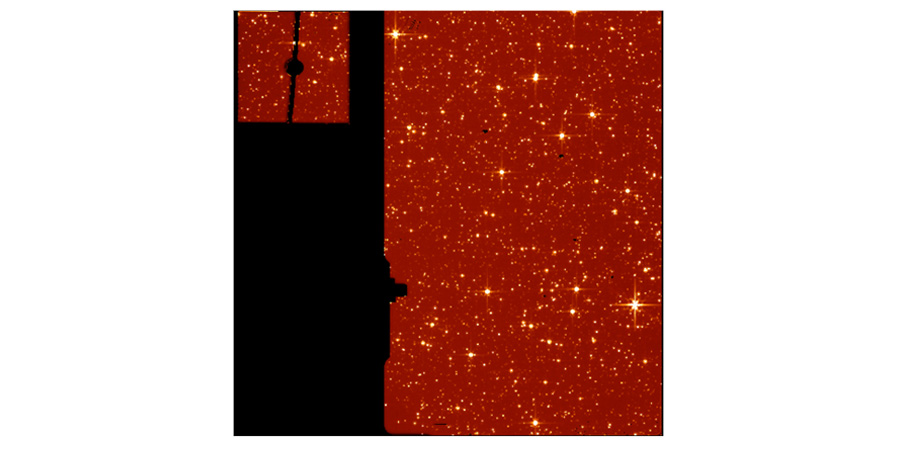About This Article
When we think of simulations in astrophysics, beautiful videos of galaxies forming and evolving or of dusty disks collapsing to form planetary systems readily come to mind. But in the development of instrumentation too, simulations play an important role at all stages of the design, assembly, and integration process. Knowing how incoming photons will be recorded onto the detectors lets us making smart design choices, develop optimal data processing techniques, and test the flow of data through the observatory’s data management system. For an observatory like JWST, troubleshooting the data flow from the detectors to the archive is an important task. A great way to do this is to use realistic simulated data.
For JWST’s Mid-Infrared Instrument (MIRI), the Instrument Development Team has invested much time and effort into producing such a simulation package, called MIRISim*. The MIRISim package incorporates several modules that simulate aspects of an observation:
- The sky scene being observed
- The different optical pathways through the instrument
- The behaviour of its unique mid-infrared detectors
The simulator can generate imaging, as well as low- and medium-resolution spectroscopic data. With MIRISim, the team can create quasi-realistic data in the correct format with accurate metadata (header information), so the calibration pipeline can be tested under realistic conditions.

The simulated data produced with MIRISim are also used to prepare for the busy months of commissioning. In this 6-month period after launch, the instrument teams are tasked with testing instrument operation and scientific performance. Having the right software tools in place will help ensure that the measurements and analysis we need to get the instrument ready for science go smoothly. Preparations for commissioning are a major focus for the entire project in 2019 and 2020, and producing simulated datasets to prepare our analysis toolkit is an important part of this work.
The value of simulators, such as MIRISim, goes beyond testing of calibration and data management processes. Simulated observations can also help scientists to better understand the capabilities of the instrument, prepare their own observations, and plan ahead for data analysis. Mock observations produced with MIRISim can be used for preparatory research projects ahead of the JWST launch. They can provide a benchmark for comparison with theoretical predictions, or output from astrophysical or cosmological simulations.
Want to try it out for yourself? The MIRI European Consortium has recently released the MIRISim software package to support the whole community. Scientists around the world who are interested in mid-infrared observations with JWST can now generate their own simulated observations. For more information and instructions for use, please visit the MIRISim webpage.
Stay tuned for more news on simulating JWST observations with other instruments!
*MIRISim is owned and maintained by the MIRI European Consortium. Questions about MIRISim may be directed to mirisim@roe.ac.uk

